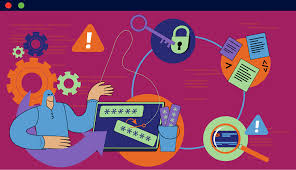Developing a comprehensive fraud prevention strategy involves considering various aspects of fraud prevention and implementing a multi-layered approach. Here are some key steps to develop an effective fraud prevention strategy:
- Risk Assessment: Conduct a thorough assessment of your organization’s fraud risks and vulnerabilities. Identify potential fraud vectors, weak points in systems and processes, and areas where fraudsters could exploit vulnerabilities. This assessment helps prioritize fraud prevention efforts and allocate resources effectively.
- Establish Policies and Procedures: Develop clear and comprehensive fraud prevention policies and procedures that outline the organization’s stance on fraud prevention, detection, reporting, and response. These policies should cover areas such as user authentication, data protection, transaction monitoring, vendor due diligence, and incident response. Ensure that employees are aware of and trained on these policies.
- Implement Strong Authentication Measures: Utilize strong authentication methods to verify the identity of users and prevent unauthorized access. This may include multi-factor authentication (MFA), biometric authentication, or token-based authentication. Strong authentication adds an extra layer of security and helps mitigate the risk of account takeovers and unauthorized access.
- Fraud Detection Technologies: Implement fraud detection technologies and systems that can identify suspicious activities, anomalies, and patterns indicative of fraud. This may include behavior analytics, machine learning algorithms, anomaly detection, and real-time transaction monitoring. Regularly update and fine-tune these systems to adapt to evolving fraud tactics.
- Data Monitoring and Analysis: Establish mechanisms to monitor and analyze data for signs of fraud. This includes monitoring user behavior, transaction patterns, access logs, and system logs. Implement data analytics tools and techniques to detect fraud patterns, identify outliers, and proactively identify potential fraud incidents.
- Vendor Due Diligence: If your organization relies on third-party vendors or service providers, conduct thorough due diligence to ensure they have robust fraud prevention measures in place. Assess their security practices, data protection measures, and their ability to handle sensitive information securely. Regularly review and monitor their performance to maintain adherence to fraud prevention standards.
- Employee Awareness and Training: Educate employees about fraud risks, prevention techniques, and their role in fraud prevention. Provide regular training sessions on fraud awareness, phishing prevention, social engineering, and secure data handling practices. Encourage employees to report any suspicious activities or security incidents promptly.
- Continual Monitoring and Review: Fraud prevention is an ongoing process. Continuously monitor and review fraud prevention measures, policies, and technologies to identify areas for improvement and stay abreast of emerging fraud trends. Regularly assess the effectiveness of fraud prevention controls and adjust them as needed to address new threats.
- Incident Response and Investigation: Develop a robust incident response plan to handle fraud incidents effectively. Define roles and responsibilities, establish clear escalation procedures, and ensure coordination between departments involved in fraud response. Conduct thorough investigations into fraud incidents, collect evidence, and take appropriate actions, including reporting incidents to law enforcement when necessary.
- Collaboration and Information Sharing: Foster collaboration with industry peers, law enforcement agencies, and relevant organizations to share information, best practices, and emerging fraud trends. Participate in industry forums, conferences, and information-sharing platforms to stay updated on the latest fraud prevention techniques and contribute to collective efforts against fraud.
- Regular Audits and Compliance: Conduct regular audits to assess the effectiveness of fraud prevention controls and verify compliance with industry regulations and standards. Identify any gaps or weaknesses and take corrective actions to address them promptly.
Remember that fraud prevention is a continuous process that requires ongoing monitoring, adaptation, and improvement. By implementing a comprehensive fraud prevention strategy and staying vigilant, organizations can effectively mitigate fraud risks and protect themselves and their customers from online fraud.
SHARE
